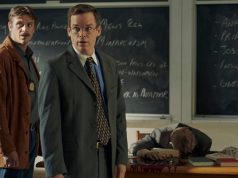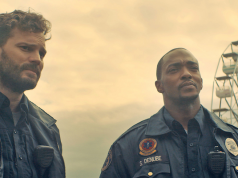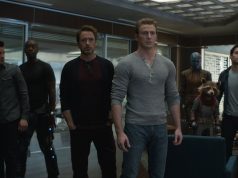The space-time continuum is tweaked considerably in “The Time Machine,” as two or three minutes of exciting action are stretched out over an hour and a half. How did those science wizards pull off such a feat?!
Actually, there’s very little science in this science-fiction story, based on H.G. Wells’ classic novel. Absent-minded professor Alexander Hartdegen (Guy Pearce) becomes obsessed with time travel after the death of his fiancee in 1899, and subsequently invents a machine that allows him to go back and try to save her. She dies anyway, though, and so he heads for the future with a question on his mind: “Why can’t I change the past?”
The time machine itself is a spherical chamber with a comfortable-looking chair (though it lacks a cupholder). It apparently travels through the corridors of time via machinery parts that spin and whirl; exactly zero seconds are spent on the details of it.
This seems an error. In films like “Kate & Leopold” or “Austin Powers: The Spy Who Shagged Me” that use time travel, it is permissible to skip the science because it is secondary to what those films are actually about (Meg Ryan being cute and Mike Myers being funny, respectively). But in a movie CALLED “The Time Machine” — a movie ABOUT time travel — perhaps you ought to take a moment to explain the theories behind the machine, and why it actually works.
One applauds the filmmakers’ efforts to keep the running time short, but one’s admiration is diminished upon viewing the rest of the film, which runs only 96 minutes but feels a lot longer. How can a movie about time travel have so much of nothing going on?
Alexander eventually winds up in the year 802701, when Earth civilization is more or less starting over and has been divided into two races. The Eloi are a happy, peace-loving aboriginal tribe with no word for “steal” in their language; the Morlocks are fearsome beasts who live underground.
Simon Wells — great-grandson of H.G. Wells — directed most of the film, with Gore Verbinski (“The Mexican,” “Mouse Hunt”) taking over for the last couple weeks of shooting. Without knowing who directed which scenes, it’s difficult to tell whether the spotty outbursts of excitement are due to an uneven script or directors with different styles. There are outbursts, though: nifty time-lapse shots of New York City changing and evolving, the tragically beautiful sight of a crumbled moon orbiting the Earth, a Morlock attack on the Eloi — all well-photographed (or computer animated), all thrilling in their way.
But it amounts to nothing, strangely. Guy Pearce should be representing all of us, wishing we could change the past, but instead he’s just a cold, distant movie character: As much as you want to like him, there’s just nothing to latch onto. The science of the film is skipped, and the human elements are downplayed. A few pieces of the film buzz and whir; very little of it actually clicks. The thing just never gets off the ground.
C- (; )





